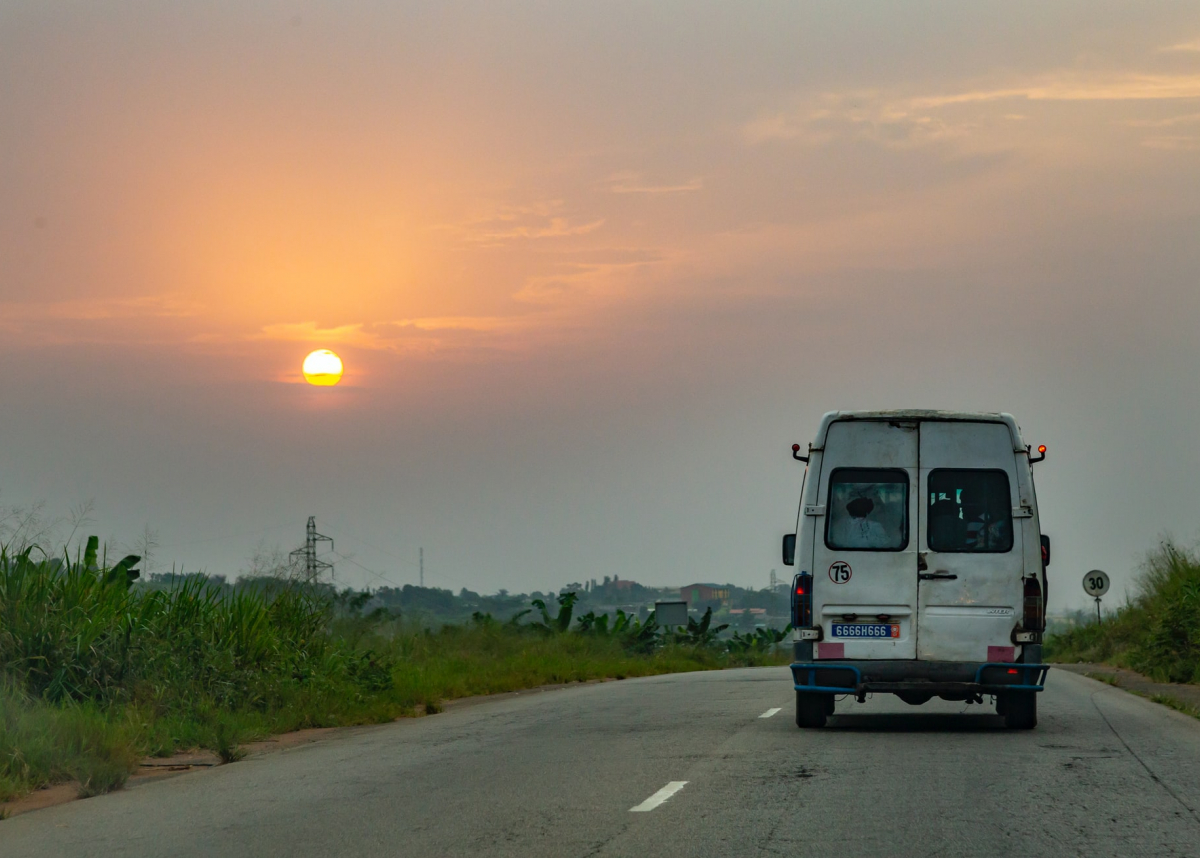
PEAK Urban researchers share insights on how city transport can recover more equitably and sustainably than before.
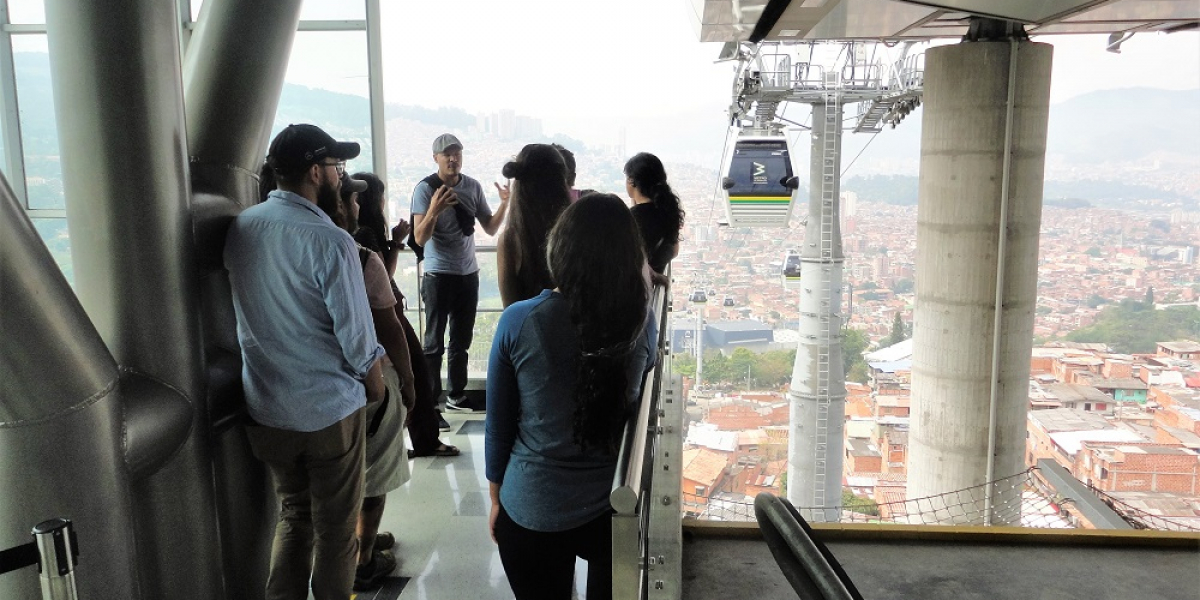
This blog is a collaborative effort by the PEAK Working Group on Land Occupancy; Aditi Dey, Amy Weimann, Bani Gill, Bhawani Buswala, Carlos Velasquez, Daniela Caro Nova, Edwar Calderon, Jacob Doherty, Juan Pablo Orjuela, Namrata Kapoor, Nobukhosi Ngwenya, and Samuel Yutong Cai
“13 De Noviembre. This was the day when the community won the fight against forced displacement by local authorities. The people won that day.
And they named the settlement 13 De Noviembre.”
This is Carlos’ reply to an initial query about the uncommon name of the settlement. Carlos is a sociologist and a resident of Comuna 8. He is an important community leader and has contested local elections here. As a small group of international, intercultural, and interdisciplinary urban researchers, we were excited when we learned that Carlos had agreed to be our city interlocutor. We looked forward to learning from him asa city expert bit also his knowledge and experience of his home. We even had some polyglots in the group to facilitate Spanish-English translation and cultural communication. Critically enthused with our engagement with the comuna, the visit generated diverse discussions in which we shared our observations and comparative reflections.
The act of naming is an important performative moment to reflect about both the particular socio-political histories which shape the power to name urban spaces (communities, types of land claims, modes of mobility, habits, etc.) as well as the numerous struggles from the diverse urban margins (as, also, spaces of socially just visions) to contest such power centralization and reclaim it for the people. The seemingly simple symbolic act of naming a settlement points towards the importance of urban micro-scale practices of reclaiming city spaces and city temporalities. This then necessitates a deeper understanding of the processes which shape the relations between different urban spaces in the city and how they are linked; how the city’s public and private infrastructural resources are distributed in these spaces; how their inequitable distribution is contested, or legitimized; and how, in short, the web of market forces, government powers, and residents’ practices shape the intertwined material and symbolic topography of a city surrounded by mountains.
The dynamics between different urban divisions and how they are materially and symbolically integrated reflect the socio-political history of the city. The modes, the access, the ease, and the directions of city mobility indicate this integration, and its meanings.
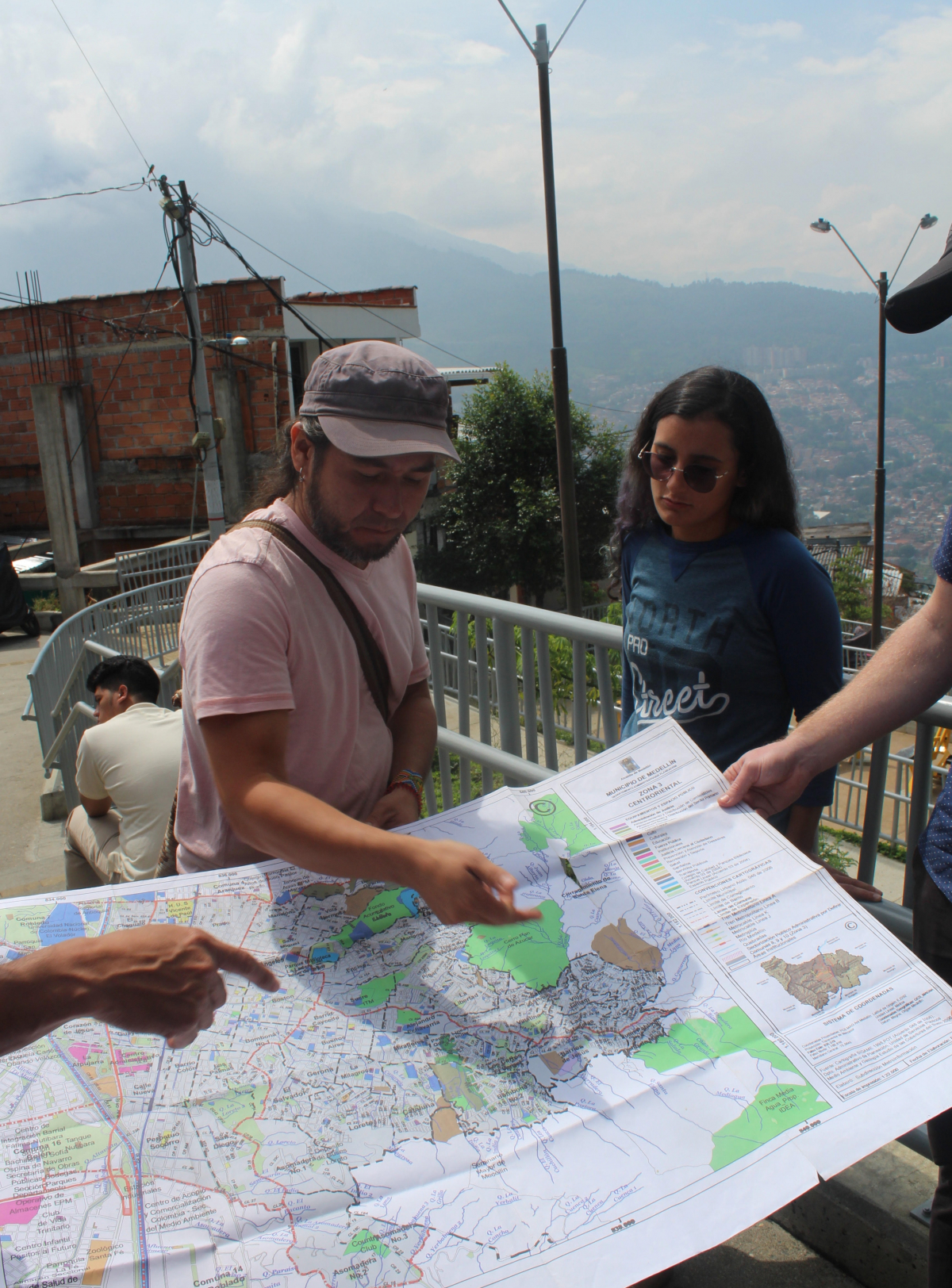
To reach the neighbourhood in Comuna 8 from El Poblado in Comuna 14, our trip included three modes of transport: a metro, a tram, and a cable car. The order in which these different modes joined the built environment of the city reveals particular planning trajectories, and claim-making histories. These transport systems have been designed to integrate the city, facilitate diverse mobility, and spur urban transformations. They have responded to decades-long processes of settlement and housing construction in the city, and, in turn trigger the emergence of new settlements.
Medellín, thus, provides us with an interesting case of infrastructural inter-relationality between housing and transport. Documenting and analyzing the micro histories of how the city slowly took its contemporary form would provide key global insights on how the city as a form needs to be engaged with and theorized.
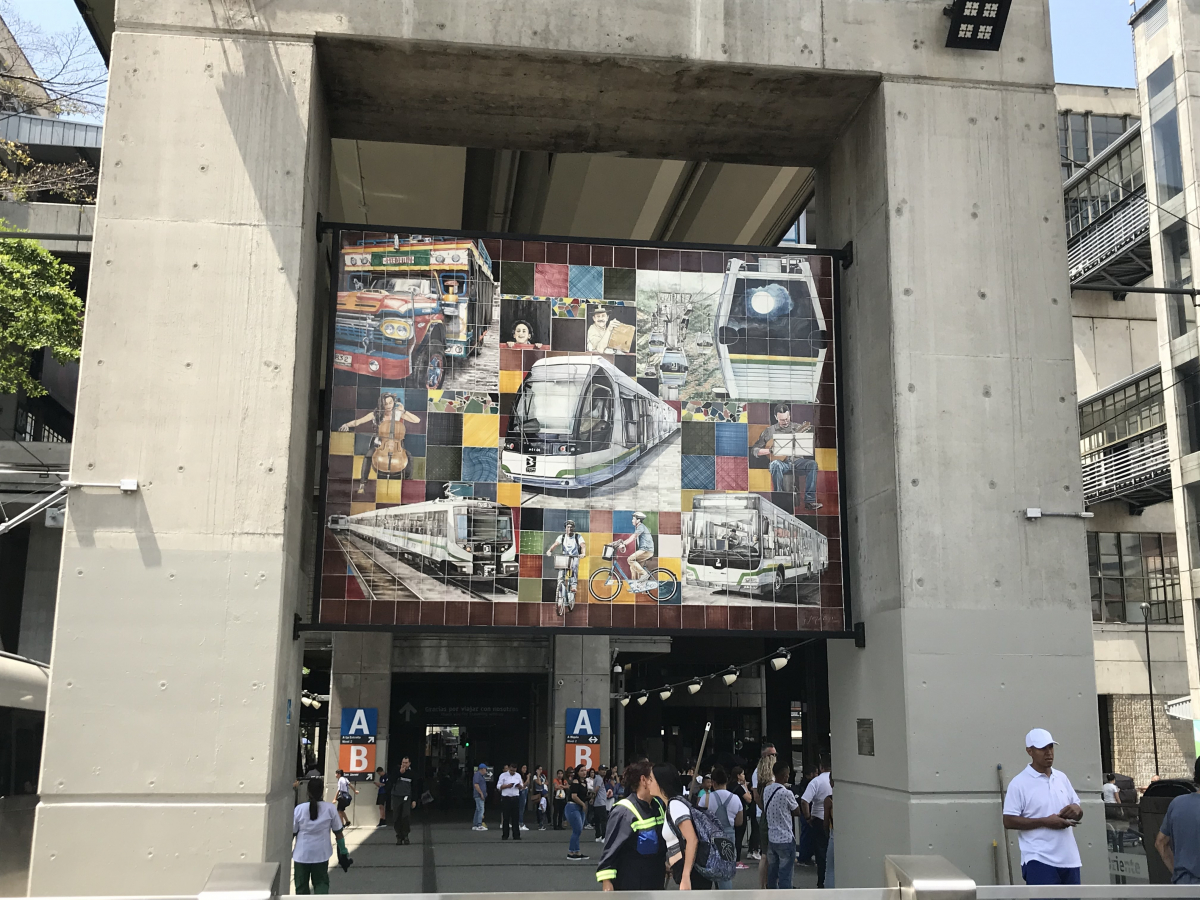
When walking in the neighbourhood, one would also notice a seemingly mundane, but omnipresent, mobility technology: stairs with ramps.
We learned that many of these stairs were built by the communities themselves as one of the first pieces of infrastructure that were established after homes were built. Pooled resources for materials coupled with community labour to build these access routes are illustrative of the kinds of collective life that make settlements the places that they are. Ramps have been retrofitted down the centre of many of these staircases to make it easier for motorbikes to navigate the narrow roads of these steep, high-altitude neighbourhoods. These ramped stairs remind us that infrastructures accrue slowly over time; that they are retrofitted to serve new ends; and that they reveal the multiple forms of city-making occurring all at once. There are stories in these stairs.
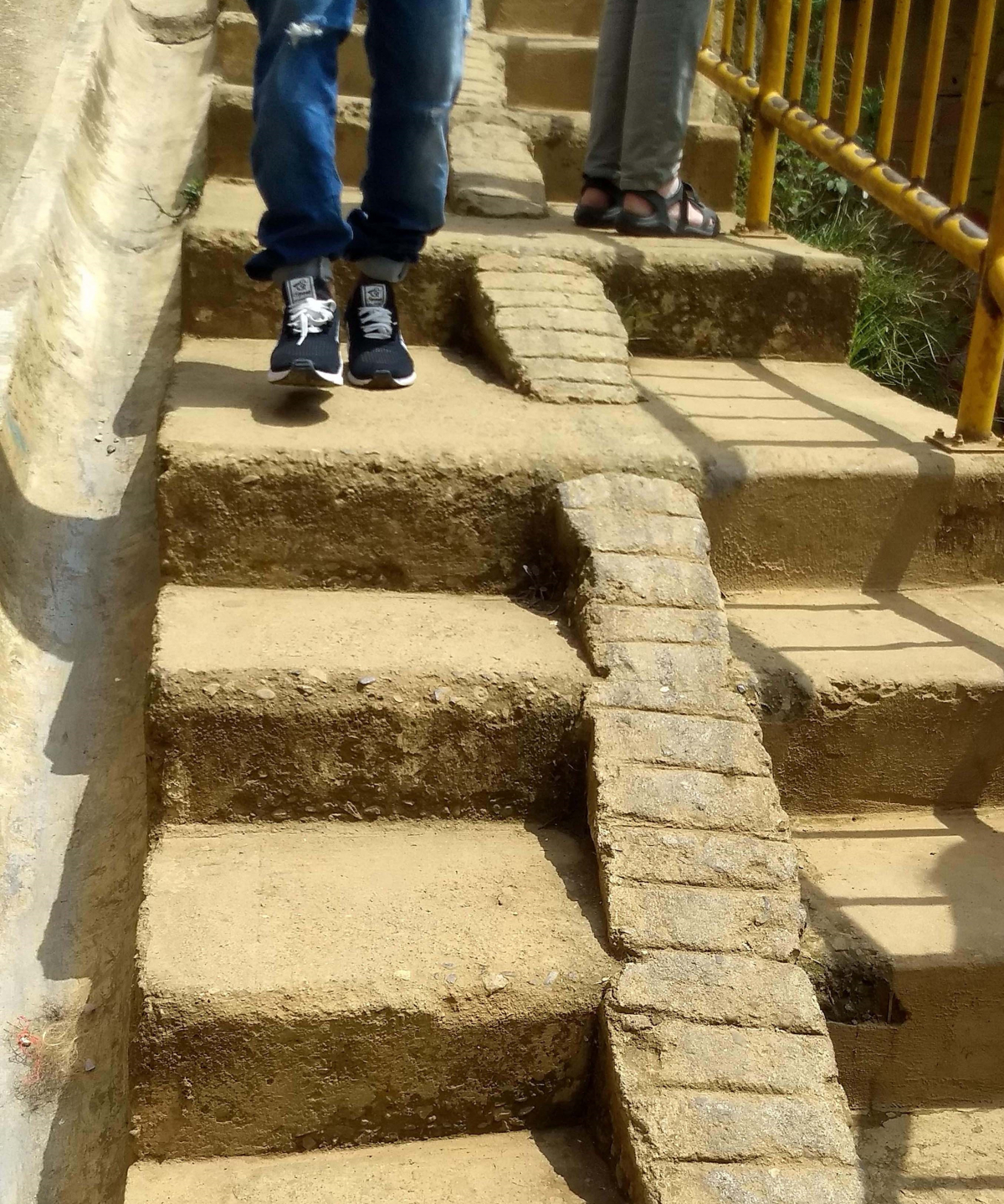
Our understanding of city mobility needs to realize that it would remain incomplete and inadequate without numerous such localized community contributions to the city’s systems and integration. If the social precarity of neighbourhoods in Comuna 8 was manifest in their built environment, so were the collective strategies that residents have used to make the place, and to make it their own. This sense of belonging and ownership reflects the resilience and adaptability that these communities have achieved through decades in these challenging geographies.
If socially just mobility is a key to a city’s success, the spaces to create urban sociality – where the claims of justice could be envisioned, posited, discussed, and deliberated –are a necessity in the city. Examining inequality in the distribution of the communal spaces is key to understanding the challenges in the reproduction of the critical publics in the city. Amidst the conditions of general state neglect in the neighbourhood, the community takes it upon themselves to make numerous efforts to create and sustain multifunctional physical spaces, and to transform them in critical deliberative spaces.
Take, for instance, a street football match in the neighbourhood where the community-built stair-seats are used by old and new spectators, sipping some refreshing drinks on a hot afternoon and cheering for their teams. This space is used for various organized or emergent community gatherings, activities, and discussions. Similarly, we observed how at another spot in the neighbourhood, the area under a power transmission tower was cleared to repurpose it as public space, where some young people were socialising.
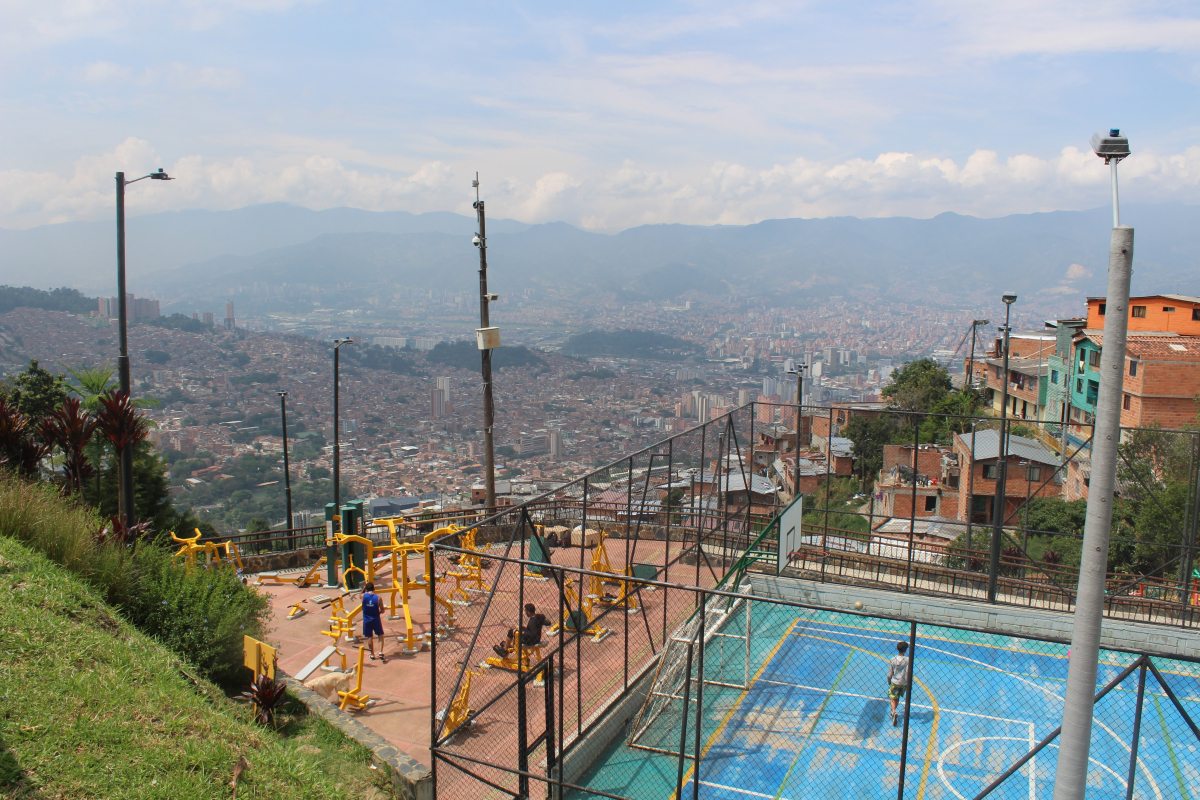
In the comuna, we witnessed numerous instances of how material scarcity shapes people’s lives. But we were also inspired by the organisational skills of the people living in the comuna. Outdoor gyms and parks, sportsfields, community vegetable gardens, compost pits, and community centres across the site were all great examples of the community’s capacity and local managerial skills. People were actively building and working on their own residential settlements despite their long hours of paid labour elsewhere in the city.
This emphasises the importance of recognising the diverse labours which people locally contribute in the making of a city. Such community infrastructure needs to be recognised, and thus supported and encouraged, if only for the boost it could provide for people’s mental and physical health. Creating, repurposing, and sustaining such public places is important for generating a sense of local identity and citywide belonging. The sociality which such public spaces promote not only helps in mitigating the conditions of violence in some of the areas, but also, is an essential condition for realising and sustaining the critical public sphere in its actual sense.
In the end, people’s struggles and experience are a key question of land and ownership in the city. The power to name a settlement — and to celebrate its naming — tells us multitudes. It tells us the kinds of land relations that exist in the city. It tells us the claims that could be made on them. It tells us the roles that armed groups play as an urban actor in their territory. And it tells us how different land practices by communities (for instance: the many internally displaced groups residing in Medellín) are formally recognizsd, termed, and legislated.
It was fascinating to see how power relations in the territory (dominant versus dominated) determine the “label” of land-claiming forms, from ‘invasion’ to ‘occupation,’ depending on the land acquisition process. If the land was bought from a pirate developer, the land tenant becomes an occupant. But if the land tenant took land that belongs to anybody (which usually implies the state), these communities are called invaders. We wondered what the socio-symbolic importance of the naming is for the settlement 13 De Noviembre against the general naming of land practices of people with these connotations.
The inhabitants of the neighborhoods in the comuna have invested time, money, and other resources into improving and claiming their urban space through the innovative construction and creation of pedestrian infrastructure, their own houses, urban art, and open recreational areas. The community contribution to the development of their urban space may result in a greater sense of “ownership” of the urban space and an improved sense of belonging, which ultimately shape their land claims.
A central aim of the PEAK Urban programme is to conceptualize and develop an epistemic and practical disposition, which can help us envision socially just and truly inclusive cities around the world. Using 13 De Noviembre as a case study, this was an important step towards developing that critical urban lenses.
***
Working group members and neighbourhood visit participants: Aditi Dey, Amy Weimann, Bani Gill, Bhawani Buswala, Carlos Velasquez, Daniela Caro Nova, Edwar Calderon, Jacob Doherty, Juan Pablo Orjuela, Namrata Kapoor, Nobukhosi Ngwenya, and Samuel Yutong Cai